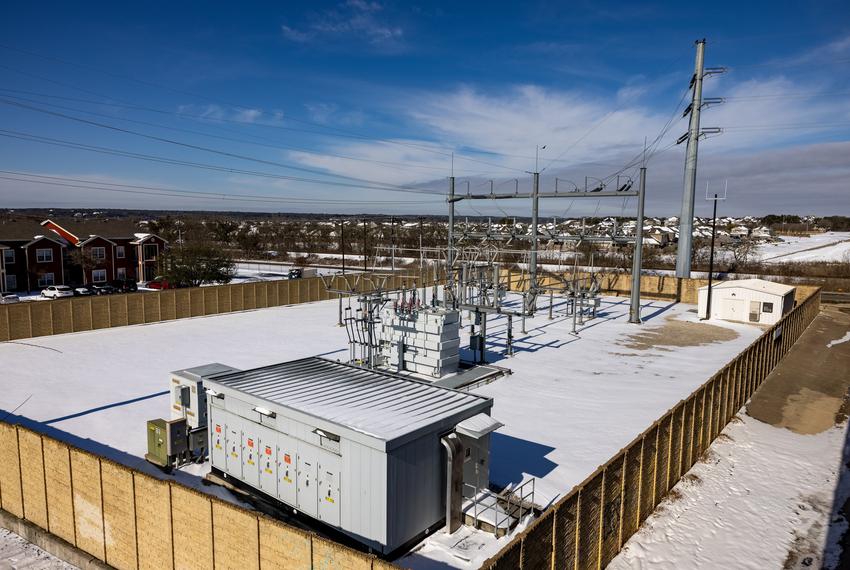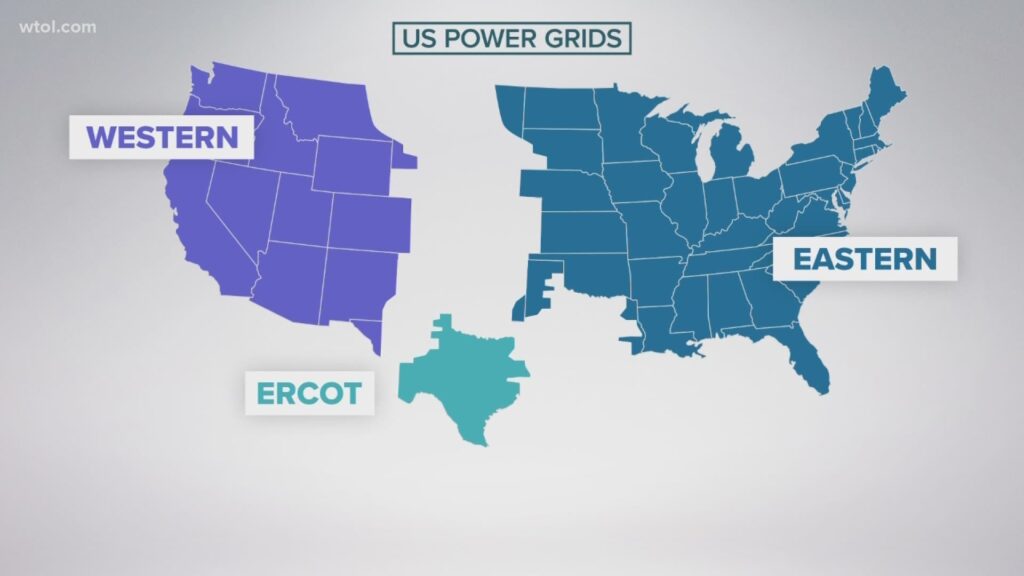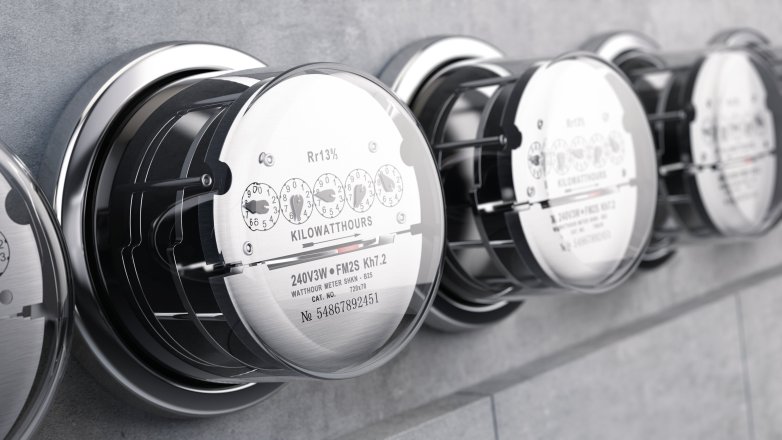
Back in January of 2014, power plants owned by Texas’ largest electricity producer, Luminant, gave into frigid temperatures when their generators failed a dozen times within a 12-hour time span. According to The Texas Tribune, this was the second reported incident of equipment malfunction for Luminant within the span of three years. They also experienced malfunctions during a more severe storm in 2011 which resulted in Luminant facing a hefty fine of $750,000 from state energy regulators.
Since the early 2000s into the present day, these reported failures in the Texas power grid have caused rolling blackouts to sweep the state, resulting in a call from the Texas Legislature to conduct a case study in an effort to understand what caused so many power plants to experience debilitating issues. A joint committee hearing of the Senate Committee on Business and Commerce and the Senate Committee on Natural Resources was held, and S.B. No. 1133 was introduced. During this time, various weatherization and preparedness reports by the Public Utility Commission (PUC) were released.
The report states that in February 2011, when dozens of power plants were expected to furnish power suddenly reported difficulties in operation just as Texas faced the first electric grid emergency after a huge winter storm that created a large demand for both electricity and gas. This led to the Electric Reliability Council of Texas (ERCOT), the grid operator, initiating rolling blackouts that caused blocks of customers to experience loss of power for periods of 15-45 minutes.
Rolling blackouts are designed to prevent an uncontrolled catastrophic failure such as the blackout that affected the eastern United States in 2003. However, this only saves the utilities provider from experiencing catastrophe but does not protect the consumer.
During the hearing of this initial investigation, energy providers complained about equipment failure caused by temperatures that were in the single digits, as well as natural-gas shortages which prevented some generators from getting the fuel needed to run power plants. Lawmakers believed that introducing S.B. 1133, which makes it a requirement for the state to report weatherization plans at power plants, was an important step toward preventing the sort of breakdowns that resulted from equipment freezing, cracking and destabilizing the state’s electric network.

The weatherized and preparedness report requires that PUC of Texas ensures reliability of electric services during extreme weather events by preparing a report on the sustainability of generators within and in consultation with ERCOT. The objective was to determine if these plans are sufficient to ensure reliability of the electric grid for both the summer and winter months, with anticipation of weather patterns in the state as forecasted by the National Weather Service. Recommendations were included in the report to note how weatherization procedures can be improved in efforts to carry out the policies effectively in the event of an emergency.
The PUC was to finalize and publish the weatherization and preparedness report for the summer months no later than March 1 of each year, and Sept. 1 for the winter months. This information was to be made public under the Chapter 552 (Public Information) Government Code.
On September 27, 2012, a company by the name of Quanta Technology, LLC (in collaboration with the PUC) conducted studies and released their findings on the critical energy infrastructure in the state of Texas. Their report outlined that Texas electric utilities that own or operate electric generation facilities and power generation companies (PGCs) must include in their reports:
• A summary of power plant weatherization plans and procedures
• A summary of alternative fuel and storage capacity
• Priorities for recovery of generation capacity
• A pandemic and hurricane plan
Within the report, an affidavit indicating that all relevant operating personnel are familiar within the contents of an Emergency Operations Plan (EOP) and detailing how they will follow it in the event of a system-wide or local emergency was also included. The EOP highlights the extent to which deviations from this plan are deemed appropriate based on the circumstances, which includes the results from annual testing drills with an effectiveness review.
In addition, a Retail Electric Provider (REP) shall include an affidavit affirming it has a business continuity plan. ERCOT is required to attest that it has a Crisis Communication Plan, a business continuity plan and a pandemic preparedness plan.
Quanta Technology demonstrated how power-generating companies like Luminant failed to understand the “critical failure points” that could cause equipment to stop working in cold weather. And by March of 2014, the PUC was seeking to implement changes that would require energy companies to both identify and address all single points of failure, including the effects of weather design limits.
Luminant stood against the proposal, stating to the commission that the requirements outlined were unnecessary and “may or may not identify the ‘weak links’ in protections against extreme temperatures.” This rebuttal eventually led to the PUC agreeing to soften the proposed changes, only requiring that power companies be liable to address issues previously known. Experts and consumer advocates say the challenge to the 2014 proposal by Luminant and other companies is an example of the energy industry’s powerful influence over the regulatory bodies that oversee them, according to The Texas Tribune.
“Too often, power companies get exactly what they want out of the PUC,” Tim Morstad, associate director of AARP Texas, said. “Even well-intentioned PUC staff are outgunned by armies of power company lawyers and their experts. The sad truth is that if power companies object to something, in this case simply providing information about the durability of certain equipment, they are extremely likely to get what they want.”
Michael Webber, an energy expert and mechanical engineering professor at the University of Texas at Austin, said the original proposal would have helped in identifying trouble spots with the state’s power grid if recommendations were followed.
“Good engineering requires detailed understanding of the performance limits of each individual component that goes into a system,” Webber said. “Even if 99.9% of the equipment is properly rated for the operational temperatures, that one part out of 1,000 can bring the whole thing down.”
So why did the Texas power grid fail?

The Texas Tribune reports that all other states in the Lower 48, as well as the peripheral areas of Texas, are connected to one of two grids that span the eastern and western halves of the country; Texas is the only state in the U.S. that operates its own electric grid. This makes it extremely difficult for other regions to transport additional power sources in times of crisis, especially when the state is facing its own shortages. Until about two decades ago, a handful of mega-utility companies controlled the distribution and pricing of power produced in the state. This happened when the legislature shifted to a system where companies would compete for customers on the open market. This free-market shift decision by lawmakers was made under the notion that this change would result in lower power bills and better service, all of which are promises that advocates of the Texas Collation for Affordable Power report have yet to be kept.
Under this system, power companies are not required to produce enough electricity to sustain the state through a major energy crisis like the one experienced on February 15-22. They are incentivized to ramp up generation only when dwindling power supplies have driven up prices. Other states that have deregulated power markets, including California, have made reforms and added additional safeguards following similar weather-related incidents, according to The Texas Tribune.
Tom “Smitty” Smith, a longtime Texas consumer advocate and environmental activist, stated, “The fault on this one is at the feet of the Legislature and the regulators for their failure to protect the people rather than profits, the utility companies, rather than investing millions of dollars in weatherization that had been recommended in review after review of these kinds of incidents. They have chosen not to do that because it would be too expensive for the utilities and ultimately to the consumers.”

During extreme weather events such as an arctic freeze or heat wave, prices per megawatt can jump from an average of around $35 to ERCOT’s maximum of $9,000. Unfortunately, some electric bills have exceeded that limit, as The New York Times reports that some Texans have already been hit with sky-high prices climbing as high as $16,000. At an emergency meeting Sunday Feb. 21, the PUC ordered electric companies to suspend disconnections for nonpayment and delay sending invoices or bill estimates.
In the wake of a disastrous response to inclement weather that resulted in deaths, state officials are once again calling for the same reforms proposed and rejected in 2011. This includes calling for officials within the PUC and ERCOT which operates the failed power grid that spans the entire state of Texas to testify at hearings. Gov. Greg Abbott took things a step further by calling on lawmakers to mandate the winterization of generators and power plants, and Texas Attorney General Ken Paxton said he was launching an investigation into ERCOT and almost a dozen power companies, including Luminant.

With all the proposed precautions to be taken, Feb. 15 marked the day that most Texans lost power during record-low temperatures. A combination of snow and ice made most roads impassable, not to mention that the state’s electric grid operator lost control of the power supply, leaving millions without access to electricity. Texans experienced blackouts that lasted anywhere from hours to days, as top state lawmakers called for investigations into ERCOT.
While thousands of Texans were left in the dark without power or clean water, The Houston Chronicle reported that more than two dozen people in Harris County alone died from events related to the icy weather.
ABC 13 reports that Republican Gov. Greg Abbott wants to force power plants to winterize after nearly half of the state’s generation capacity was knocked offline by the subfreezing temperatures. Abbott has put much of the fault on ERCOT, which he accuses of misleading Texas about the grid’s readiness. In a rare television address broadcast across Texas on Wednesday night, February 26, 2021, Abbott said the Legislature will not adjourn until the problems are fixed.
ERCOT says their staffers conduct spot checks at a small portion of power plants every year to check on their progress at protecting equipment. According to ERCOT President Bill Magness, these spot checks “are not inspections”. There is no regulatory authority to issue fines or penalties.
At least six board members of the ERCOT resigned a week ahead of likely calls for their ouster at the hearings. Officials in Houston have opened their own investigations into the outages, and prosecutors in Austin say they will investigate potential criminal wrongdoing.
